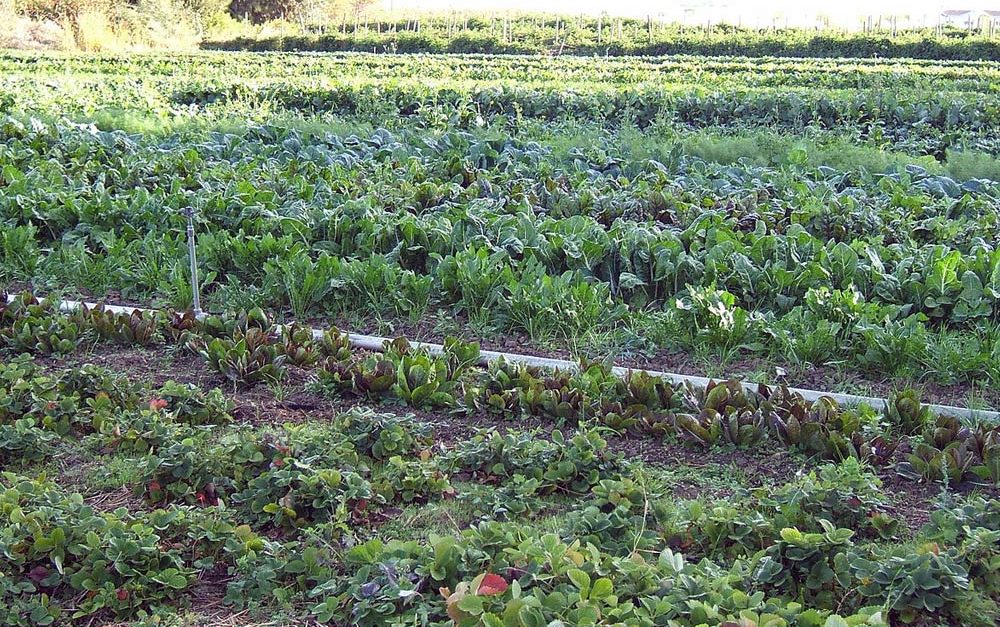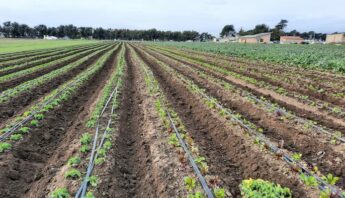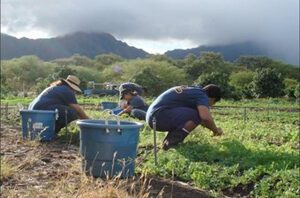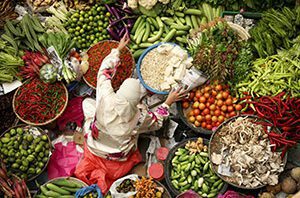Extended drought in California, freeze warnings in Oregon, flooding in the Southeast…. Today’s mounting environmental stresses of extreme and unpredictably shifting patterns in the weather, along with exhausted soil, resistant “superweeds” and pollinator losses, are taking a toll on farms across the country.
These stressors, many brought on or exacerbated by the destructive practices of industrialized farming, are also giving us a pretty clear warning that our approach to farming is going to have to change — significantly and fast.
Biodiversified farming offers one of our best hopes of restoring resilience and productivity to our farming systems. This hope is based not on wishful thinking but on decades of rigorous scientific research and millennia of farmers’ accumulated knowledge, experimentation and skilled practice in agroecology. PAN International released a new book this week in Geneva that shines a spotlight on these successes around the world.
Diversity down, pesticides up
That we have so much knowledge already at our fingertips is immensely reassuring. But are we acting on that knowledge? While many innovative farmers are doing just that, as a nation, we are not. This bigger picture is the focus of a new study that reports that crop species diversity has been falling across the United States, reaching a 30-year low in some places.
The report — from Kansas State University, North Dakota University and USDA researchers — found that across the country, crop diversity declined significantly between 1978 and 2012. Not surprisingly, the losses were most noticeable in the “Heartland” region, which had the lowest crop diversity. Other regions also experienced declines, while a few remained stable. The researchers found relatively higher crop diversity continuing in the fruit, vegetable and dairy regions of the country (map here).
Digging down into county-level data, the authors found a pronounced clustering or “mimicking” effect, with crop diversity dropping in counties to match the low diversity of their neighbors. This downward trend, most prevalent in areas where industrialized monocultural production is the norm, is a form of “landscape simplification” which has been fingered recently as a key driver of increased pest pressure and insecticide use.
While many studies have established the benefits of biodiversified farming both at the farm and surrounding landscape level, this is the first study to draw on county data to explore what is happening at a regional and national level. The repercussions of declining crop diversity will play out beyond the success of individual farms, affecting the country as a whole.
Diversified farming to feed the world
Jonathan Aguilar from Kansas State University, lead author of the crop diversity study, noted that the disturbing trends towards “agricultural homogenization” could have “far-reaching consequences for provision of ecosystem services associated with agricultural systems as well as food system sustainability.” In other words, this approach ain’t gonna work much longer.
On the flip side, increased crop biodiversity has the potential to enable farms “to resist, address and adjust to potential widespread crop failures, including natural problems such as pests and diseases, weed pressures, droughts and flood events.” By enabling farmers to “spread the risk,” crop biodiversity makes good ecological and economic sense. Aguilar explains:
Biodiversity in agricultural systems is linked to critical ecological processes such as nutrient and water cycling, pest and disease regulation, and degradation of toxic compounds such as pesticides. Diverse agroecosystems are more resilient to variable weather resulting from climate change and often hold the greatest potential for such benefits as natural pest control.
Agroecology, which includes biodiversified farming within a broader ecological, socio-political and cultural framework, has been affirmed by countless reports and expert convenings as one of the best ways forward for farming in the 21st century. Indigenous and peasant farmers the world over have known these truths for millennia. Honoring their ever-expanding repertoire of knowledge, delegates to the International Forum for Agroecology, held in Nyéléni, Mali, earlier this year, articulated their analysis of and commitment to agroecology in a powerful Declaration. The prestigious UN International Assessment of Agriculture, the FAO’s recent International and Regional Symposia on Agroecology and PAN’s new book on agroecology add to this global body of evidence.
The problem has never been a lack of solutions. Rather, the problem is one of deep inequities in our food and farming systems and injustices embedded in our social, economic and political systems, along with entrenched interests that have captured our public agencies and institutions. Tackling these problems requires a focus on and commitment to food democracy, alongside the countless courageous communities that are doing just that, in ways big and small, every day.








